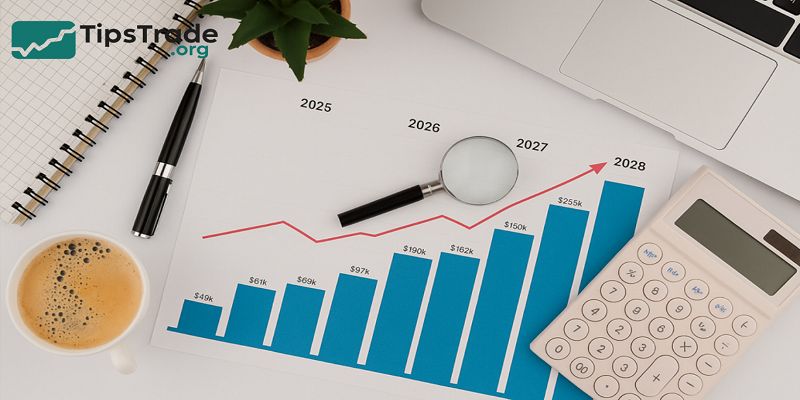Global stock investing involves purchasing shares of companies listed on stock exchanges around the world. This approach allows investors to diversify their portfolios beyond domestic markets, potentially increasing returns and reducing risks. By accessing different economies and industries, global stock investing provides opportunities to benefit from international growth and emerging markets. For a detailed understanding of these risks, you may also explore resources at Tipstrade.org which provide expert insights and comprehensive analysis on IPOs.
Why Global Stock Investing Matters Today

- In today’s interconnected economy, investing globally is no longer reserved for professionals or institutions.
- Individual investors now have easy access to international markets through online brokerages and global ETFs.
- Global stock investing simply means buying shares of companies listed outside your home country to capture opportunities worldwide.
- Compared to domestic investing, a global approach helps diversify your portfolio, reduce exposure to local risks, and tap into faster-growing regions such as Asia and Latin America.
- According to MSCI data, the MSCI World Index has delivered an average annual return of around 8% over the past two decades, reflecting the power of global diversification.
- Whether you’re seeking stability, growth, or exposure to innovation, global investing allows you to benefit from the world’s strongest economies and industries.
See more:
- IPO Process: Step-by-Step Guide to Going Public
- How To Buy Stocks in 4 Steps: Quick-Start Guide for Beginners
- Long-Term Stock Investing: Benefits and Key Principles to Understand
- Day Trading Stocks: Benefits, Risks, and Effective Investing Strategies
What Is Global Stock Investing?
Global stock investing involves buying stocks from multiple countries and regions rather than focusing solely on your home market.
This strategy provides exposure to both developed markets (like the U.S., Europe, and Japan) and emerging markets (such as India, Vietnam, or Brazil).
Investors can access global markets in several ways:
- Direct investment: Opening an international brokerage account to buy foreign shares.
- Indirect investment: Using ETFs or mutual funds that track global or regional indexes.
- ADRs (American Depositary Receipts): U.S.-listed versions of foreign company shares.
For example, a balanced global portfolio might include Apple (U.S.), Toyota (Japan), and Nestlé (Switzerland). Together, these holdings represent a blend of innovation, manufacturing strength, and consumer stability.
Key Benefits of Investing Globally

Diversification Across Markets
- Investing globally helps reduce country-specific risks such as inflation, political instability, or currency depreciation.
- When one economy slows down, another may perform better — balancing your overall returns.
- For instance, during the U.S. market correction in 2022, several Asian and European markets remained resilient.
Access to Global Industry Leaders
- Certain industries dominate in specific regions: technology in the U.S., automotive in Japan, and consumer goods in Europe.
- Global investing allows you to own world-class companies like Microsoft, Toyota, and Unilever, which might not be available on your domestic exchange.
Currency Advantage
- When your home currency weakens, the value of international investments may rise.
- For example, if the U.S. dollar strengthens against the euro, American investors in European assets gain additional returns when converting back to dollars.
Long-Term Performance
- Historical research by Vanguard shows that globally diversified portfolios experience lower volatility and higher risk-adjusted returns over time.
- This makes global investing a strong foundation for long-term wealth building.
Potential Risks of Global Stock Investing
Currency Risk
- Exchange rate fluctuations can impact your returns. Even if a foreign stock performs well, a stronger home currency may reduce profits when converted back.
- Using ETFs that hedge currency risk is one way to manage this issue.
Political and Regulatory Risks
- Each country has its own tax system, laws, and regulations.
- Political instability or sudden policy shifts — like capital controls or new taxes — can affect foreign investors.
Limited Information and Accessibility
- It can be challenging to analyze overseas companies due to language barriers or limited financial data.
- Beginners should consider global ETFs or professionally managed mutual funds to overcome this barrier.
Tax Considerations
- Many countries impose withholding taxes on dividends for foreign investors.
- However, tax treaties can often reduce these rates. Always check whether your home country has a Double Taxation Agreement (DTA) with the market you’re investing in.
Common Ways to Invest Globally
| Method | Description | Pros | Cons |
| Direct Stocks | Buy shares through international brokers | Full control, specific picks | Higher fees, research required |
| Global ETFs | Track global indexes like MSCI World or FTSE All-World | Low cost, easy diversification | Limited flexibility |
| Mutual Funds | Managed by professional fund managers | Expert oversight, simple | Management fees may be high |
| ADRs/GDRs | Foreign stocks listed on U.S./global exchanges | Easy access | Fewer options available |
Platforms like Interactive Brokers, eToro, and Fidelity International make it easy to start with minimal capital.
Smart Strategies for Global Investing

Passive (Index-Based) Strategy
- Invest in low-cost ETFs that track global indexes, such as Vanguard Total World Stock ETF (VT) or iShares MSCI ACWI ETF.
- This approach provides exposure to thousands of companies across dozens of countries — all in one trade.
Active (Stock-Picking) Strategy
- Select individual stocks or sectors with strong fundamentals.
- For example, focus on tech in the U.S., luxury goods in Europe, and green energy in Asia.
- This requires more research but can yield higher returns.
Regional Allocation
A well-balanced portfolio might look like this:
- 45% U.S.
- 20% Europe
- 20% Asia-Pacific
- 10% Emerging markets
- 5% Thematic funds (AI, clean energy, etc.)
Thematic Investing
- Instead of focusing on geography, you can invest based on global trends — such as artificial intelligence, renewable energy, healthcare innovation, or digital transformation.
Example of a Balanced Global Portfolio
| Region | Allocation | Example ETF |
| United States | 45% | Vanguard S&P 500 ETF (VOO) |
| Europe | 20% | iShares MSCI Europe ETF (IEUR) |
| Asia-Pacific | 20% | iShares Asia ex-Japan ETF |
| Emerging Markets | 10% | iShares MSCI Emerging Markets ETF |
| Thematic (Clean Energy, AI) | 5% | Global Clean Energy ETF |
This diversified portfolio spreads risk across continents and sectors, aligning with a long-term investment horizon.
Conclusion
Global stock investing opens the door to limitless opportunities. By spreading your investments across regions and industries, you reduce risk while increasing your potential for sustainable growth. The world’s markets are more accessible than ever, making it possible for every investor — regardless of experience — to build a truly diversified portfolio.

